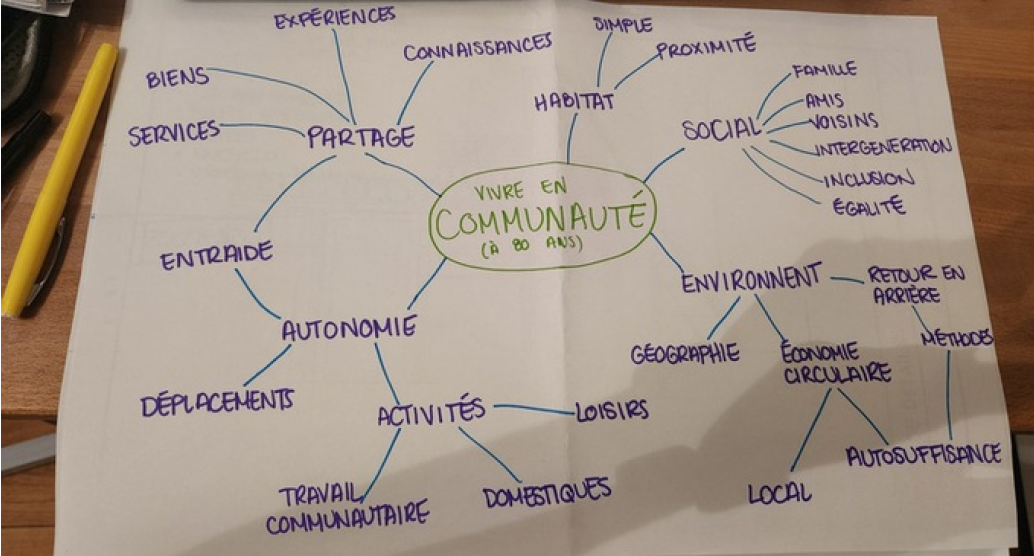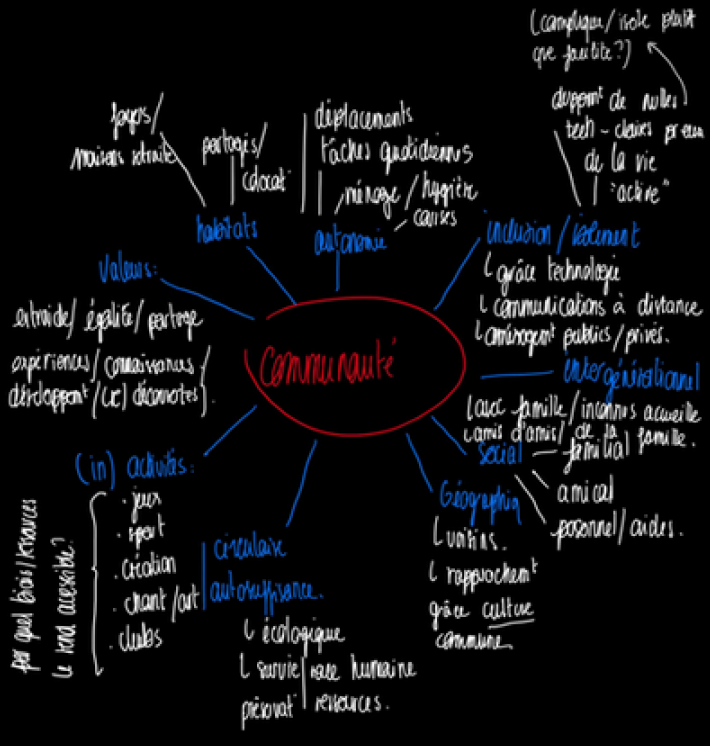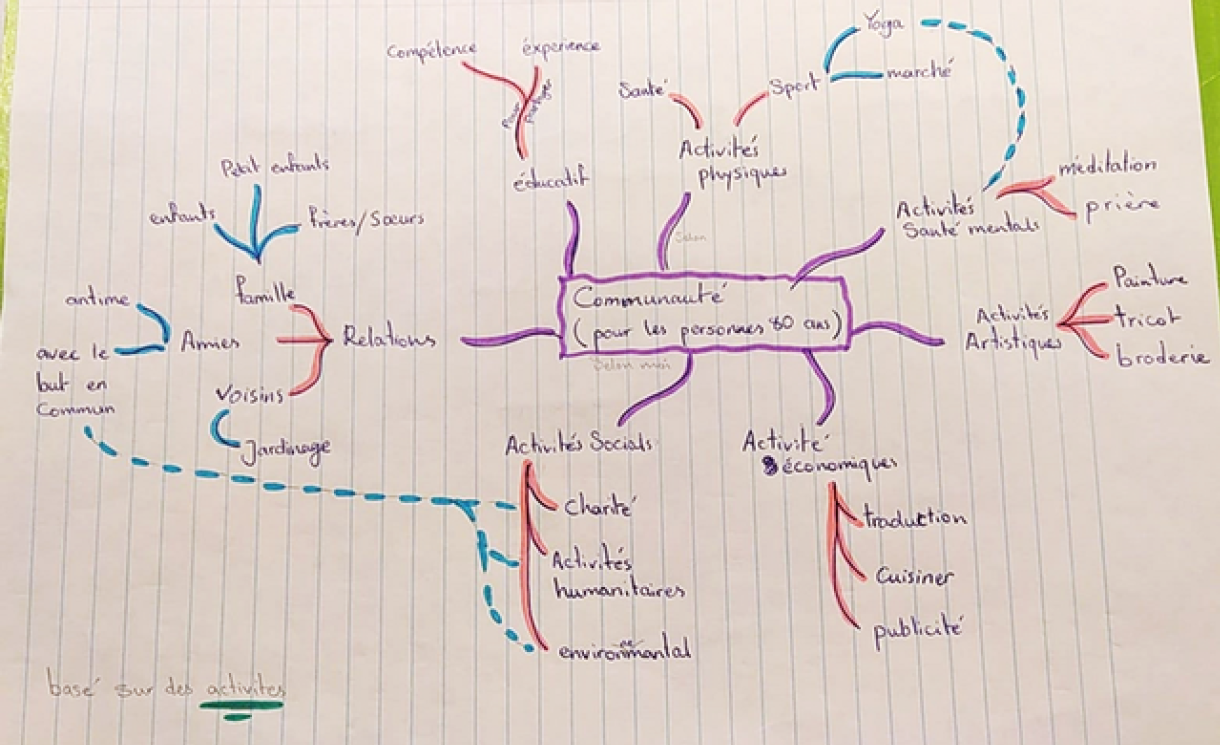HOW IT BEGINS
During the first design project as part of the Master’s program in “Design, Creation and Innovation,” we explored the needs and desires of individuals from the perspective of life at 80 years old. After analyzing and discussing these aspects in class, we formed teams based on each person’s preferred themes. Our team decided to focus our work on community, an essential aspect of the well-being and quality of life of older people.
MY ROLES
Design Team Member
User Interface (UI) Design
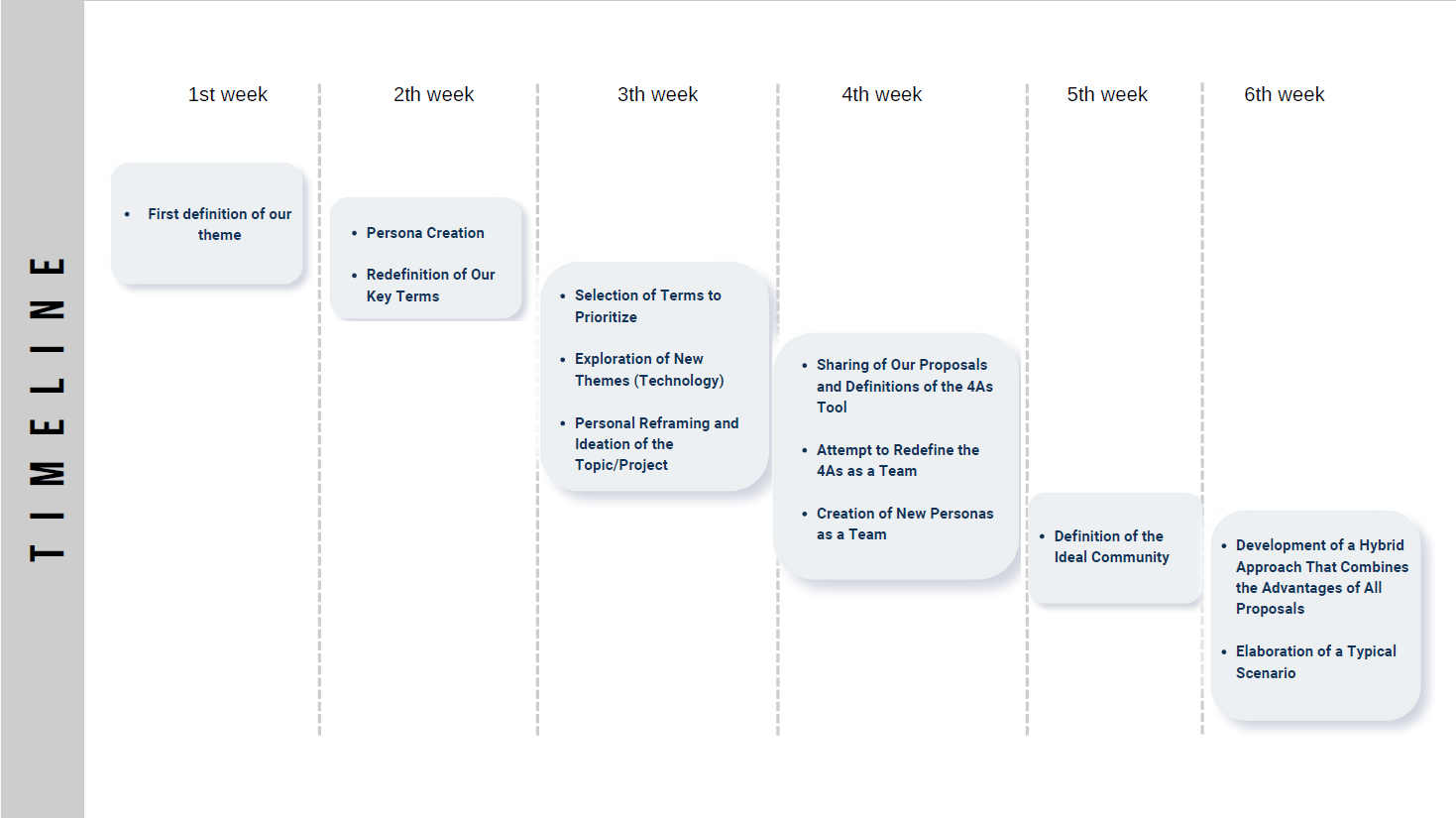
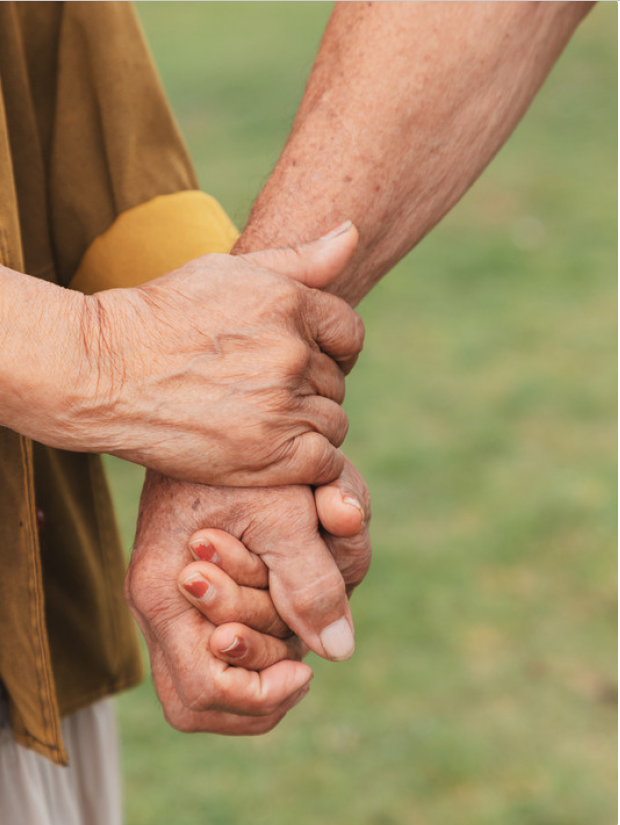
PROBLEM
In an increasingly technological and individualistic world, we are witnessing a slow disappearance of traditional know-how and a growing marginalization of older people.
However, we deeply believe that it is crucial for seniors to feel included and valued by interacting with people of all ages, helping each other, and sharing their knowledge, experiences, and expertise. As part of this project, we sought to respond innovatively to the following question: ‘How to live in a community at 80 years old’?
Approach – Week 1
The initial definition of our theme:
- Keywords related to our subject
- Individual mind maps to explore these concepts in depth
We realized that our definition of community was very different for each of us. The process of finding a common ground on the definition of community took several weeks.
Approach – Week 2
- Creation of personas
- Redefinition of our main terms
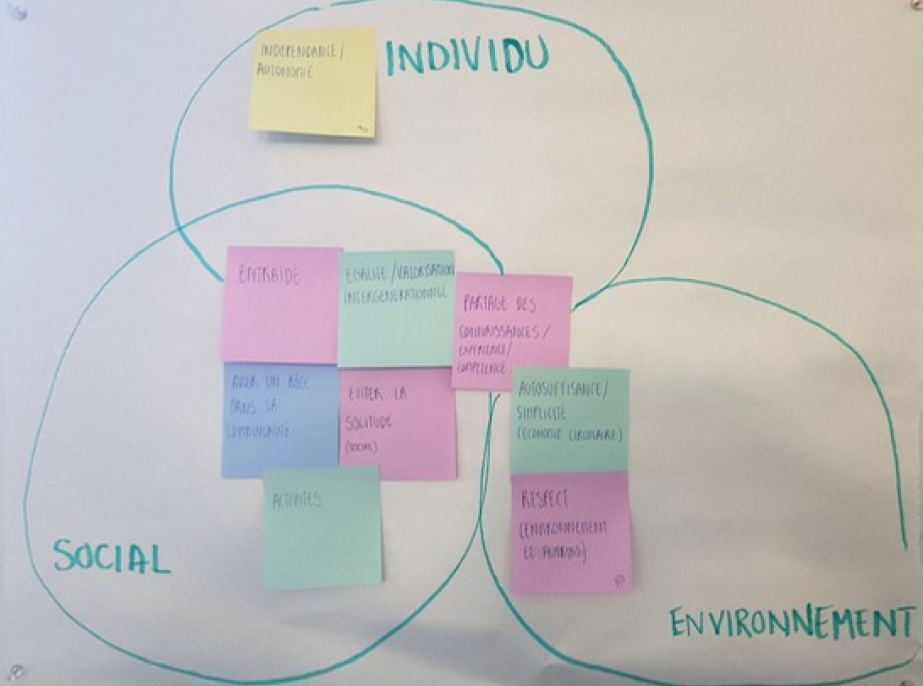

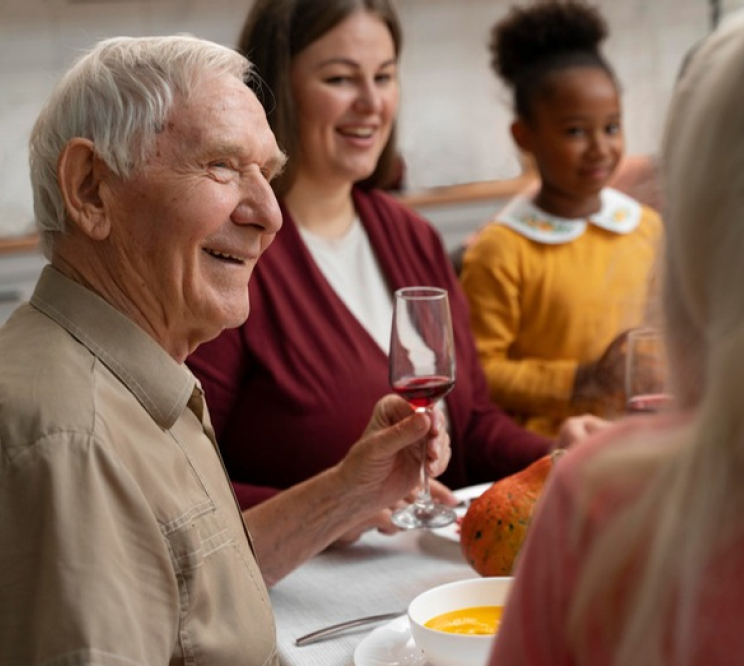
After a critical review of our approach, we were able to establish a preliminary definition of the word ‘community’.
Our objectives were as follows: continue to explore our keywords, examine different possible forms of community organizations, and define our goals.
Choosing to live together to enable better appreciation through collective and intergenerational mutual support, while respecting equality between each individual. Everyone ensures the proper functioning of the community by sharing their knowledge and skills.
Approach – Week 3
- Pooling of our documentary research
- Selection of terms to prioritize
- Proposals for a self-sufficient community in the countryside
- Discovery of new themes (technology)
- The second attempt at the consensus tool
- Personal reframing and ideation of the subject/project
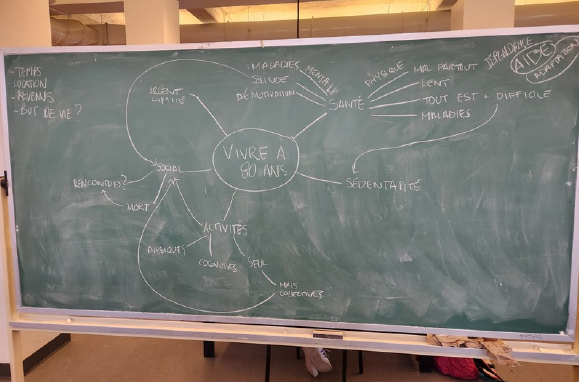
Despite our initial definition, we had to go back and create new Mind Maps to better discern the limits and definitions of other terms such as “living at 80” and “community”. This time, we created the Mind Map together instead of doing it individually. We also addressed the theme of “living in 2072”. Indeed, when we initially attempted to define the concept of living in a community, we overlooked the fact that this would be set in the future.
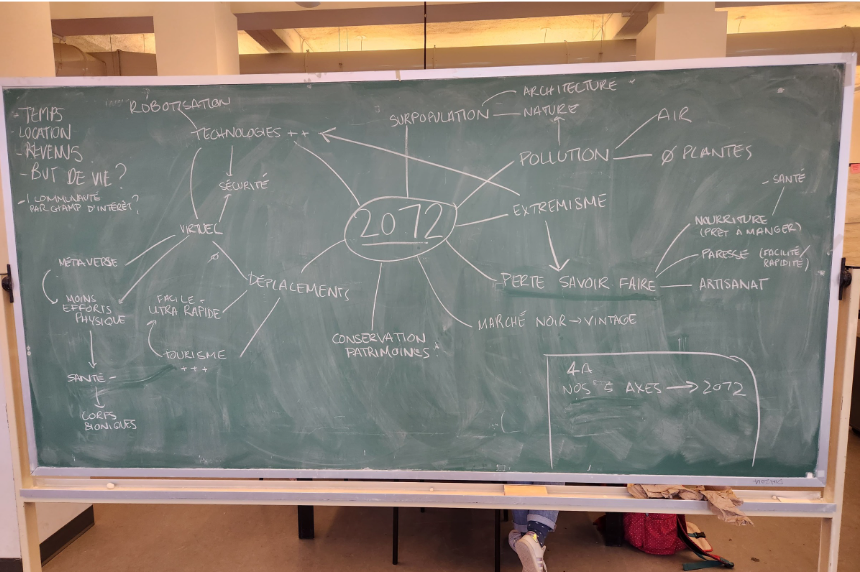
The problems encountered led us to potential solutions. To address these issues, we redefined certain terms, such as the valorization of the individual through mutual aid, equality and inclusion through intergenerational interaction, and the sharing of knowledge, experience, and skills.
Problems encountered
- The concept of a rural community is not very innovative
- The 4As did not help to better define the project, as we are too focused on the solution and not enough on framing
VS
Potential solutions
- Redefinition of certain terms to specify our ideal project
- Development of possible types of orientations
- Reorientation of our project to better anticipate and respond to future needs and resources
Based on these redefinitions, we were able to develop different possible directions and we even questioned the integration of technology into our theme of community.
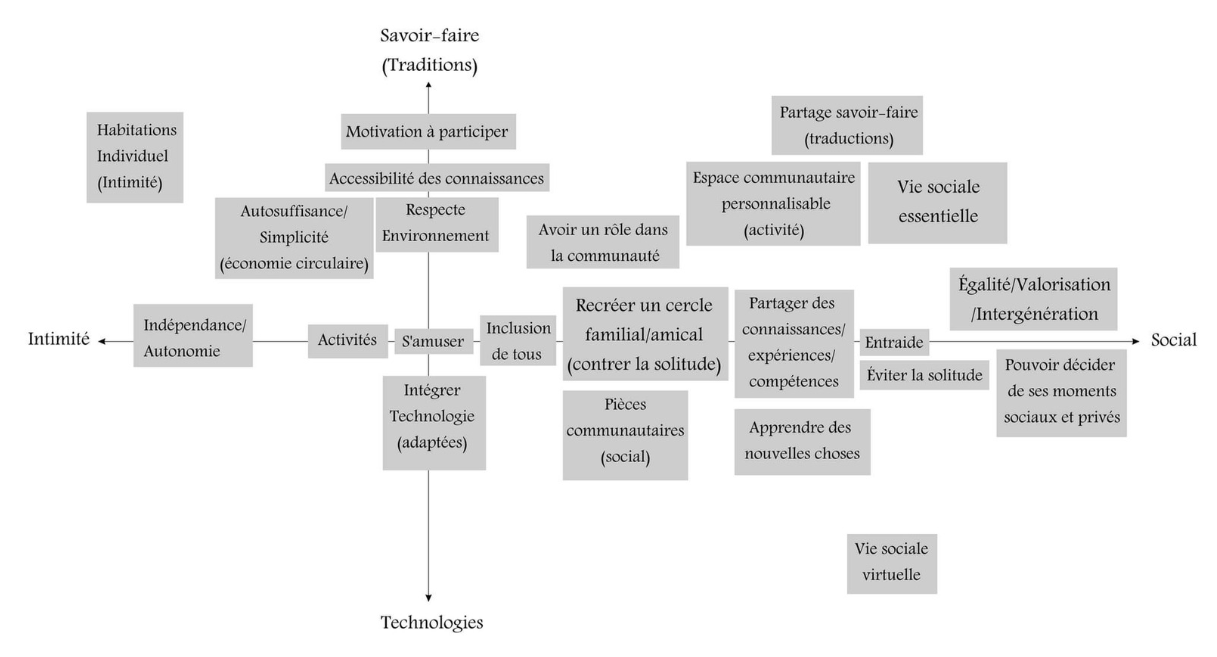
Approach – Week 4
- Pooling of our proposals and our definitions of the 4As
- Attempt to redefine the 4As as a team
- Creation of new personas as a team
Challenges Faced
- Too many keywords prevent us from identifying the overall problem
- Ideas too focused on solutions
- The impression of constantly iterating without surpassing preconceived ideas.
What should be put in place to resolve them?
- Go back and reframe the problem (4A)
- Define our itch and insight
By adopting activity theory, we identified the key elements, although some remain to be defined once the concept is finalized.
We chose to structure our community around sharing and intergenerational interaction, incorporating the following principles: mutual aid, living together, and respect for rules.
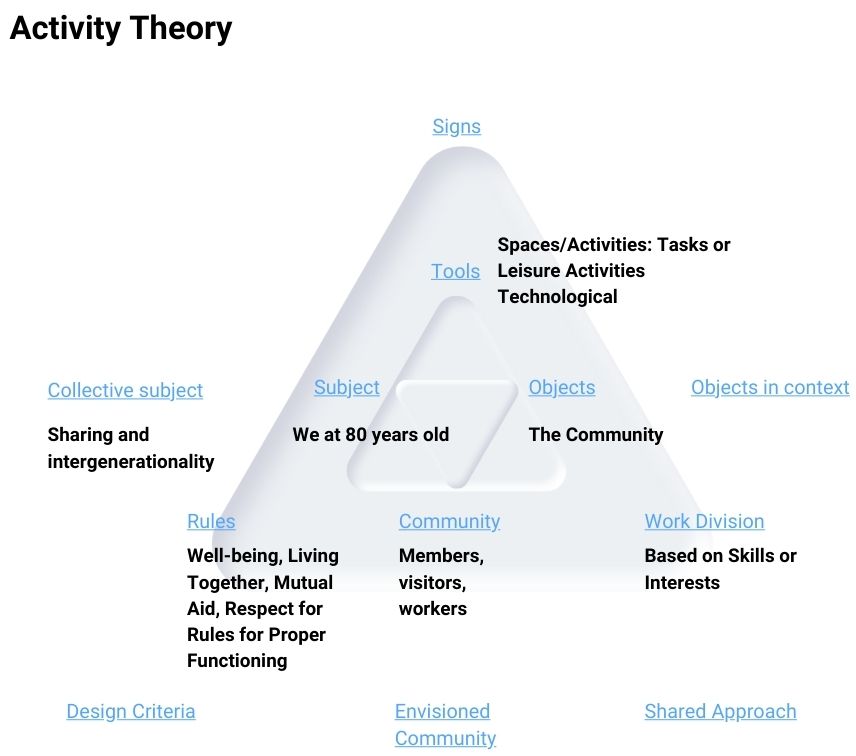
Approach – week 5
- Personas: Major Issues of the Project
- Areas of Interest: Aspect of Intergenerational Sharing
- Mind Maps
- Definition of the Ideal Community
- Reframing of the Project
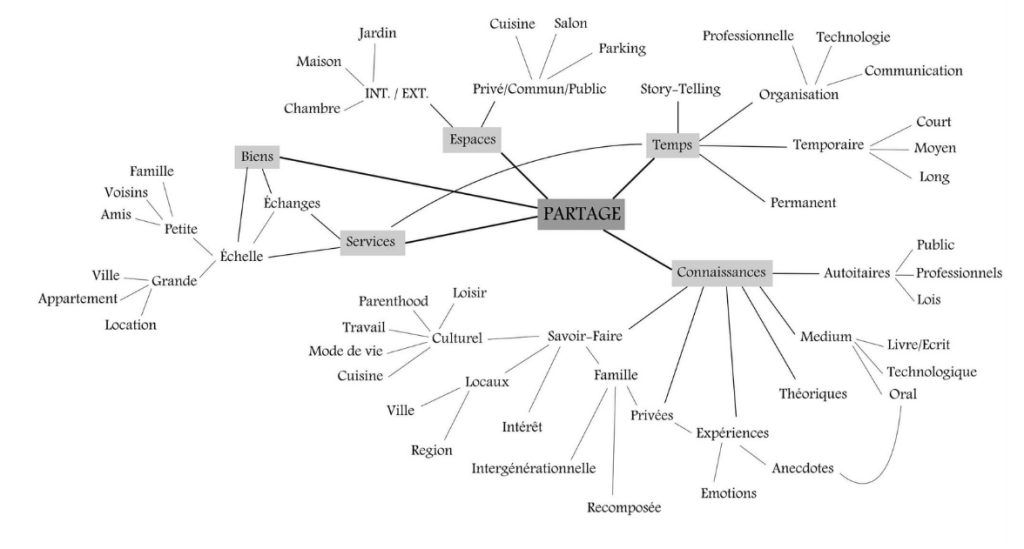
In the fifth week, we decided to delve deeper into our two main themes identified by the consensus tool from the previous week, namely intergenerational sharing through mind maps.
By breaking down these two themes, we could ultimately draft our definition of an ideal community at 80. Our project is finally taking shape with a more concise framework.
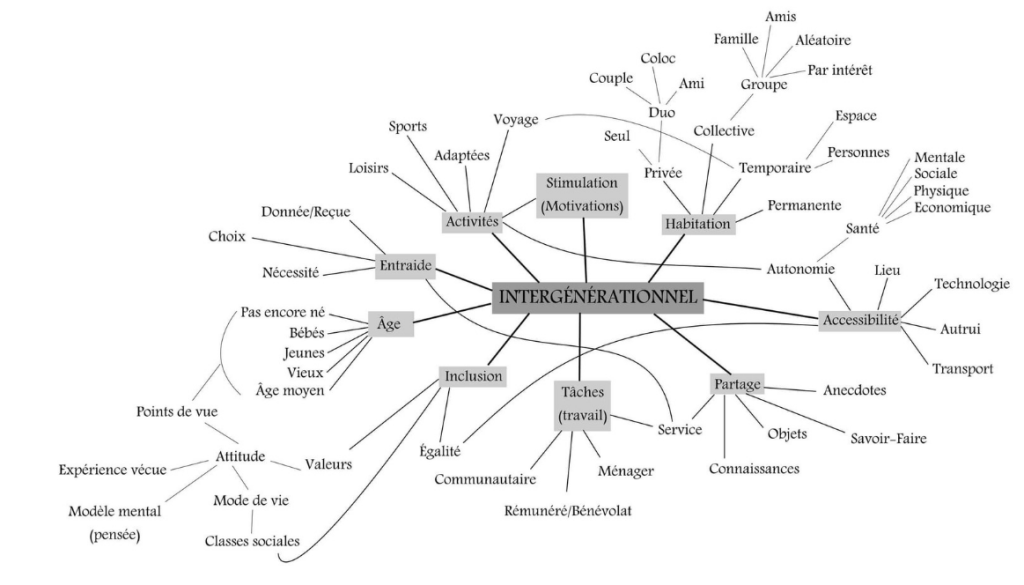
Definition of our ideal community
Private homes in an urban building for all types of individuals (age, social class, lifestyle, etc.) where inclusive, motivating, and collective activities take place.
These activities can be designed for pleasure or to help the proper functioning of the community (tasks/responsibilities), and are divided according to each person’s know-how, experience, interests, and autonomy.
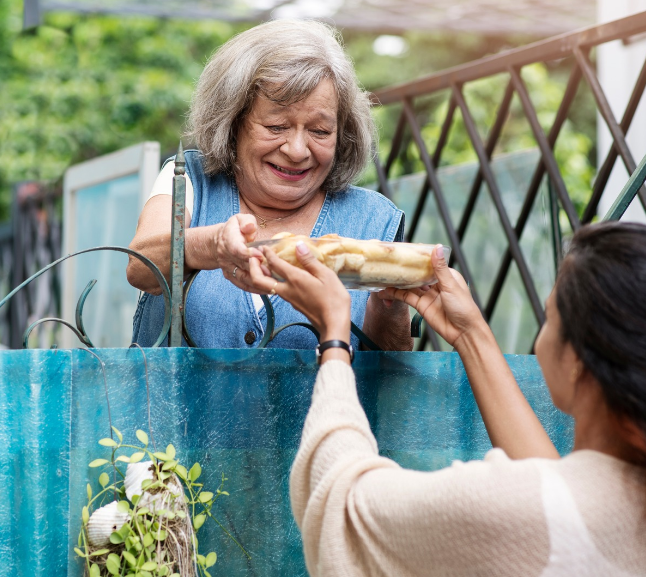
Proposals for Individual Ideas
Idea 1: A Community School
By Manon
Intergenerational Space That Utilizes the School at All Times and Offers a Variety of Activities.
Idea 2: An Educational and Residential Center
By Sepideh
Facilitate Knowledge Sharing for All at Low Cost.
Idea 3: Rehabilitate Abandoned Spaces
By Maxine
Preserve and Renovate Public Buildings While Offering New Habitable Spaces.
Approach – Week 6
- Development of a Hybrid Pathway That Combines the Advantages of All Proposals
- Creation of a Scenario
Through the collective sharing of our ideas, we were able to develop a final hybrid proposal and its corresponding scenario.
Our Final Idea
We propose to integrate seniors into schools within an intergenerational community, where housing adjacent to urban schools offers both permanent and temporary residences. These accommodations allow residents to integrate while maintaining their independence and privacy. They participate in activities and workshops with students, as well as in certain weekly tasks. The PART’app application, a hybrid between Airbnb and Facebook, facilitates access to information about available housing and services and allows community members to communicate, organize activities, and share their skills to benefit others.
Development plan
As an example – reduced scale
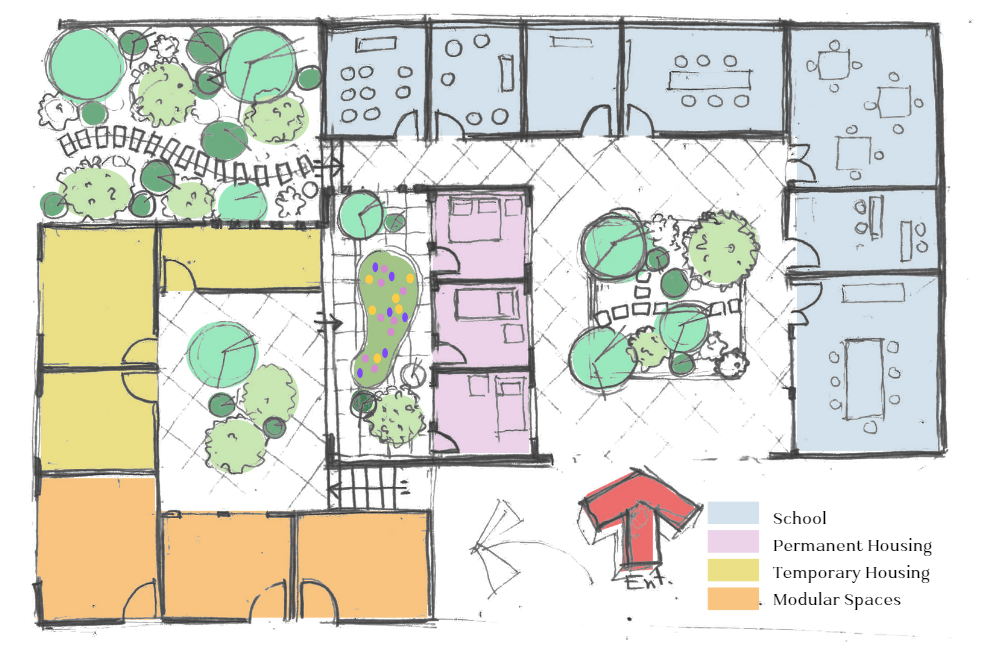
Scenario
A Community Within a School
Permanent and Temporary Members
Seeking a Community and a Way to Share Their Skills with Others
An App That Brings People Together
Offers Various Prices, Locations, and Skills
In-School Activities
We can achieve our first major goal of customer acquisition once these new strategies are ready to be deployed.
Extra-curricular activities
Personal or Official
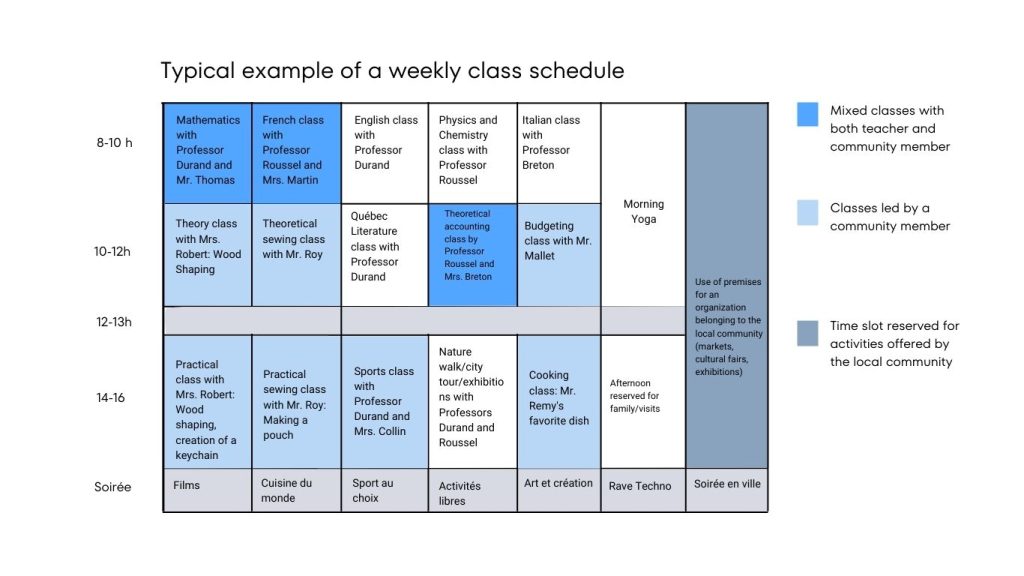
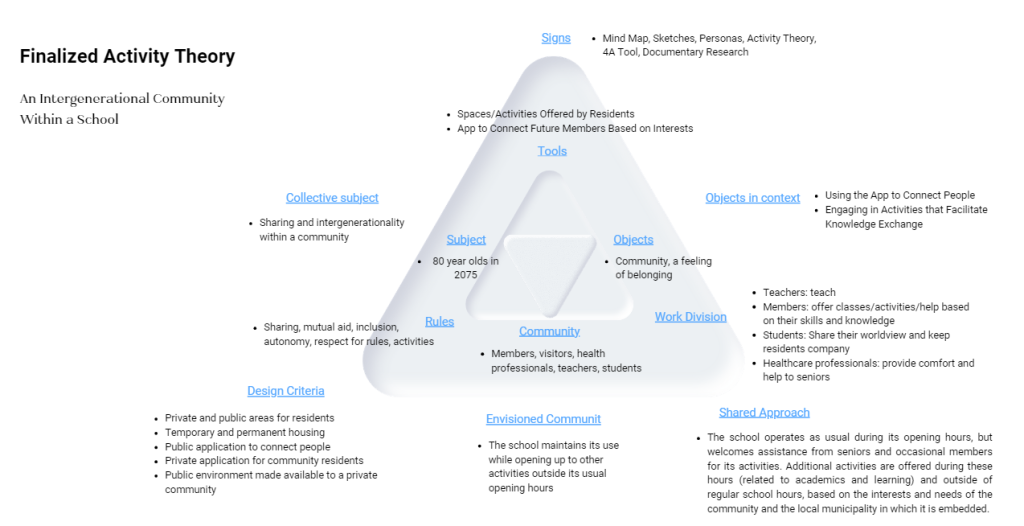
WHAT I LEARNED
Collaborative Teamwork: I gained valuable experience working closely with a team of designers, enhancing my ability to collaborate, share ideas, and integrate diverse perspectives.
Establishing Common Ground: I learned that differing interpretations of the same subject are common. To reach effective solutions, it is crucial to establish a shared understanding and definition among team members.
Problem Definition: I realized that the first and most essential step in solving a problem is to define it clearly. A well-defined problem lays the foundation for a successful design process.
Proficiency in Design Tools: I developed skills in using various tools throughout the design process, allowing me to experiment with different methods and techniques to achieve desired outcomes.
